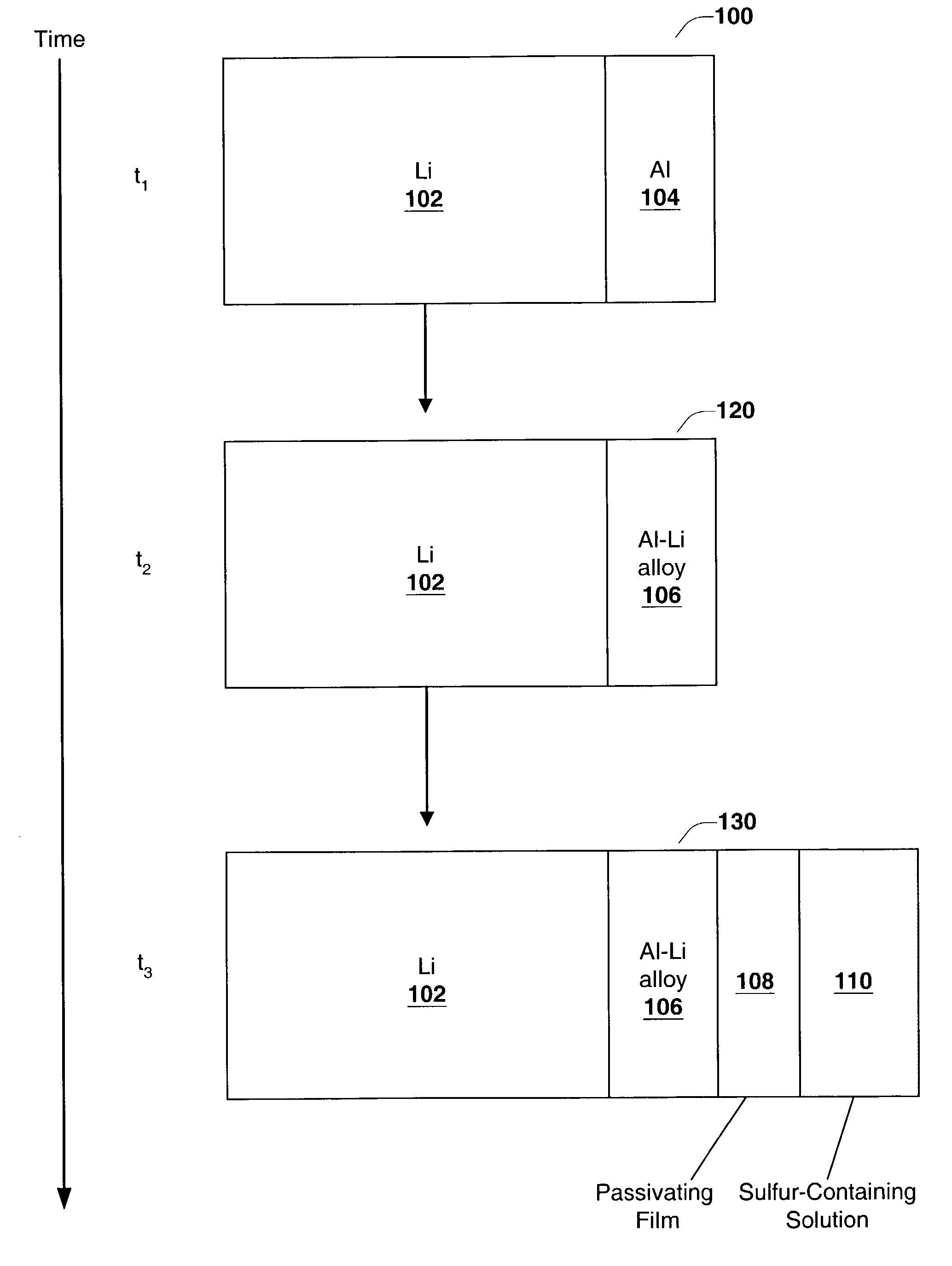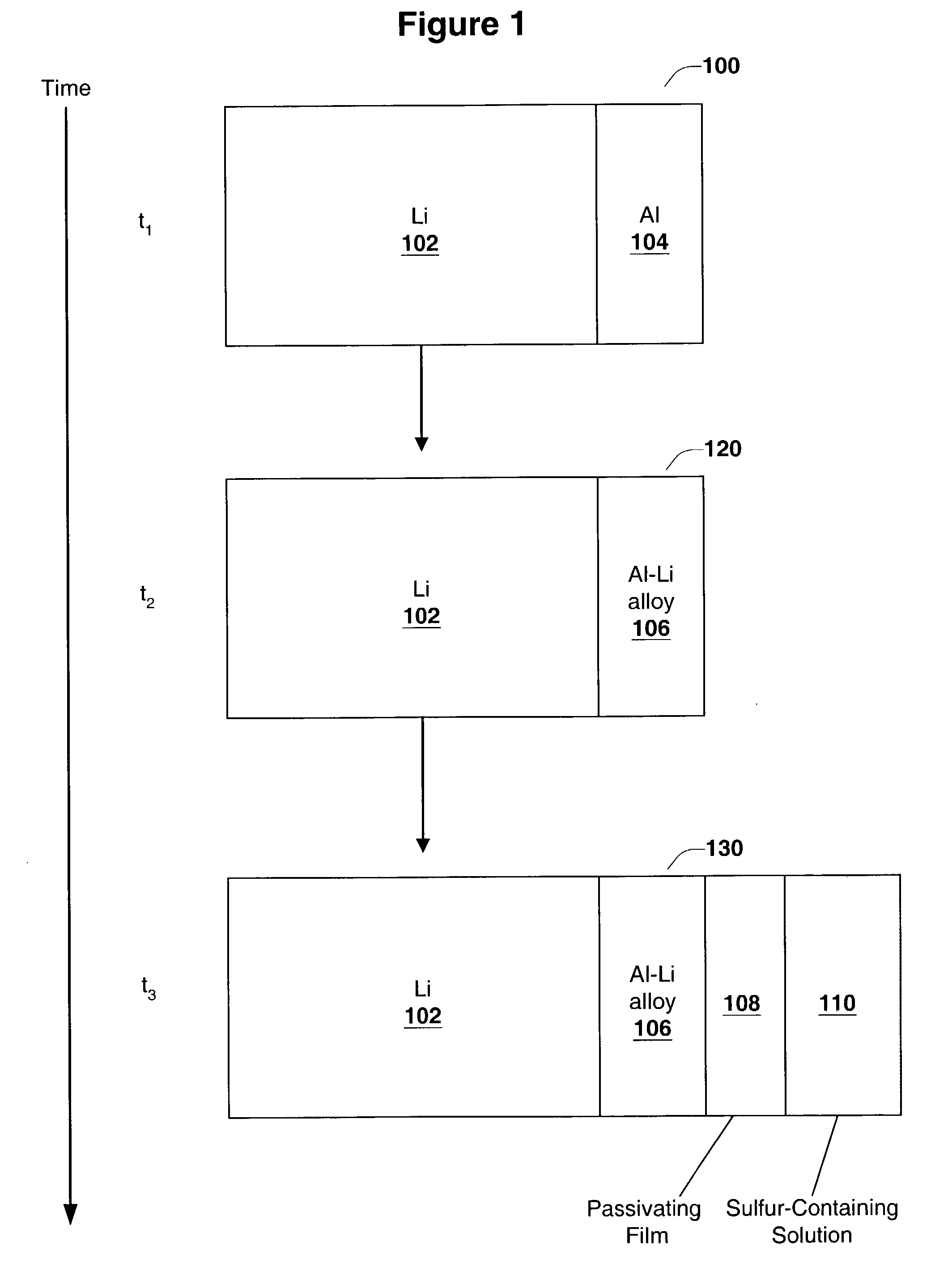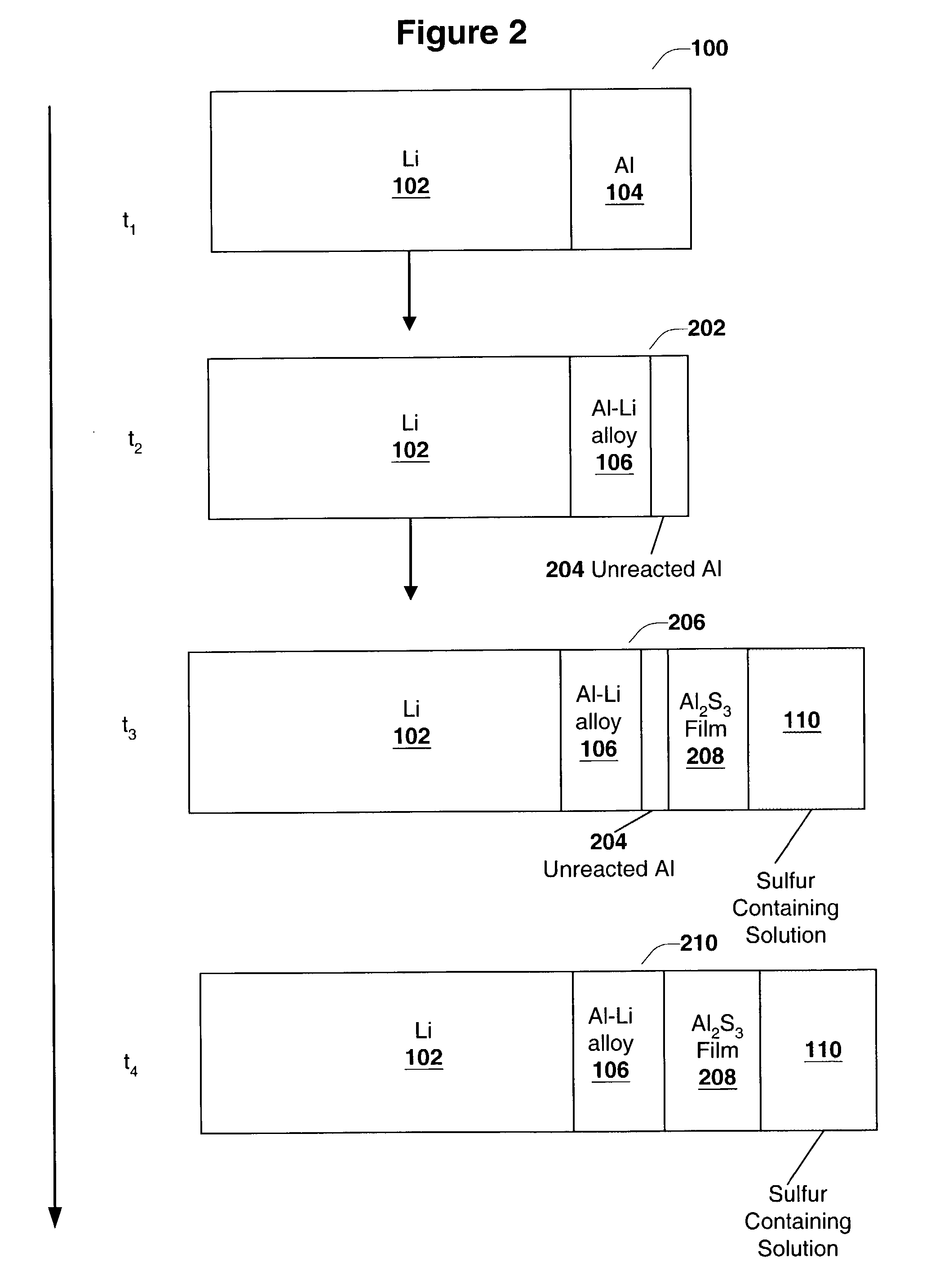Coated lithium electrodes
a lithium electrode and electrode technology, applied in the field of electrochemical batteries, can solve the problems of poor cycling efficiency of lithium electrodes, battery described in these references, and other references, and achieve the effect of increasing the cycle life and storageability of the electrochemical cell
- Summary
- Abstract
- Description
- Claims
- Application Information
AI Technical Summary
Benefits of technology
Problems solved by technology
Method used
Image
Examples
examples
[0088]The following Examples are provided to illustrate certain aspects of the present invention and to aid those of skill in the art in practicing the invention. These Examples are in no way to be considered to limit the scope of the invention in any manner.
experiment 1
Capacity of a Lithium Anode with an Aluminum-Lithium Alloy Surface Layer
[0089]A laboratory electrochemical cell was constructed containing a lithium anode, a porous sulfur-loaded cathode, and an electrolyte solution containing a supporting salt, LiN(SO2CF3)2- lithium bistrifluoromethanesulfonil imide (LiTFSI), dissolved in a mixture of 1,2 dimethoxyethane (DME) with 1,3 dioxolane (Diox). The supporting salt was used at a concentration of 0.5 mole per liter of solution. The ratio of DME to Diox was 9:1 by volume. All electrolyte components were bought from Aldrich.
[0090]The separator was a micro-porous polymeric layer having a nominal thickness of 25 microns (Hoechst Celanese, Celgard 2400). The separator was vacuum dried overnight prior to transfer into an argon-filled glovebox. A cathode was made by impregnating a slurry containing elemental sulfur into a carbon fiber paper (Lydall Technical papers, Rochester, N.Y.). The slurry composition was 50 wt % sulfur, 28 wt % carbon black, ...
experiment 2
Capacity of a Lithium Anode with an Aluminum-Lithium Alloy Surface Layer and an Al2S3 Surface Coating
[0092]In this experiment cells similar to the ones used in Experiment 1 were tested to obtain Li electrode capacity values. The thin layer of Li—Al alloy was formed by laminating thin Al foil (7.0 μm thick from Alpha Aesar Co.) onto the surface of Li foil (125 μm thick from Argo-Tech Co.) and storing the resulting structure between two glass plates at room temperature for one day in an argon-filled glove box. Glass plates were clamped together to maintain good contact between Li and Al surfaces. The process of Li—Al alloy formation was monitored through the glass plates. No change in Al reflectance was observed. Thus, Al foil was not fully converted into Li—Al alloy, and some pure Al was left on the surface. The formed laminate had a structure: bulk Li / Li—Al alloy / Al. Then, the Li / S cell was assembled, and hence, Al surface was placed in contact with an electrolyte containing dissolv...
PUM
| Property | Measurement | Unit |
|---|---|---|
| thick | aaaaa | aaaaa |
| thick | aaaaa | aaaaa |
| thick | aaaaa | aaaaa |
Abstract
Description
Claims
Application Information
 Login to View More
Login to View More - R&D
- Intellectual Property
- Life Sciences
- Materials
- Tech Scout
- Unparalleled Data Quality
- Higher Quality Content
- 60% Fewer Hallucinations
Browse by: Latest US Patents, China's latest patents, Technical Efficacy Thesaurus, Application Domain, Technology Topic, Popular Technical Reports.
© 2025 PatSnap. All rights reserved.Legal|Privacy policy|Modern Slavery Act Transparency Statement|Sitemap|About US| Contact US: help@patsnap.com



